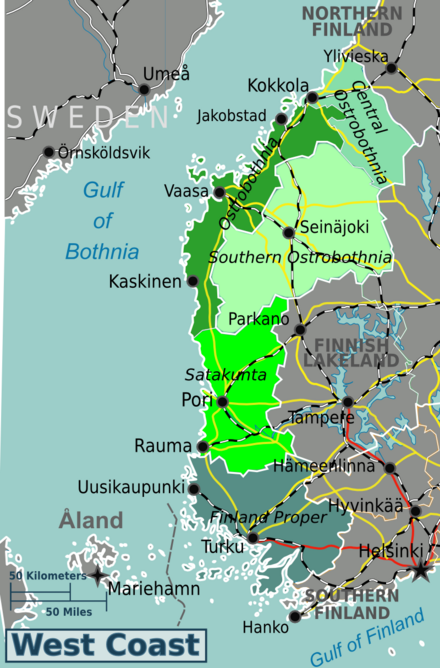West Coast (Finland) - province of Finland between 1997–2009
The West Coast of Finland is a geographically flat region bordering the Gulf of Bothnia. Being the westernmost part of Finland, this is where western influences such as Christianity first arrived in Finland. As a result of this, here you can find some of Finland's oldest cities and towns as well as half of the country's Swedish-speaking minority. This article comprises the pre-1997 Turku and Pori and Vaasa provinces.
Regions
Central Ostrobothnia is both geographically and population-wise relatively small. Most things of interest can be found in the region's largest city Kokkola. The town Kaustinen hosts a huge yearly folk music festival.
The region of Ostrobothnia has a large Swedish-speaking population and the Kvarken Archipelago, which is slowly rising up from the sea due to post-glacial rebound.
This remarkably flat region is home to several music related events and the country's most famous hard alcohol brand, Koskenkorva.
This region hosts two UNESCO World Heritage Sites; Rauma's old town and the Sammallahti bronze age burial site. The sand beaches of Yyteri are also quite popular in the summer.
The southwesternmost part of Finland is called Finland Proper for historical reasons. The largest city here, Turku, is the oldest city of Finland and hosts a castle and a cathedral that are amongst the oldest in the country. The archipelago that reaches all the way to the Åland islands is another popular destination in the region and especially beautiful in the summer.
Towns and cities

Finnish name/Swedish name, name of majority language linked:
- Kokkola/Karleby
- Kristiinankaupunki/Kristinestad
- Närpiö/Närpes – tomato capital of Finland with their own, very special Swedish dialect
- Pietarsaari/Jakobstad
- Pori/Björneborg
- Rauma/Raumo – beautifully preserved old town which is on the UNESCO world heritage list
- Seinäjoki – transport hub, biggest city in Southern Ostrobothnia
- Turku/Åbo – the former capital of Finland
- Vaasa/Vasa – main city of Swedish-speaking Ostrobothnia
Other destinations
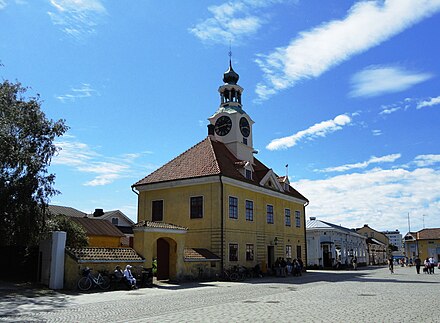
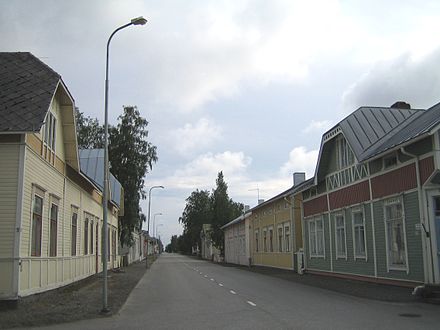
National parks
- Archipelago National Park 📍 – see Archipelago Sea
- Bothnian Sea National Park 📍 – lighthouses, seals and waterfowl, accessible with tour boat, a few spots also by road
- Kurjenrahka National Park 📍 – open bogs, small lakes, and old growth forest. Accessible with public transportation from Turku
- [Teijo National Park](https://www.nationalparks.fi/teijonp)[ 📍](https://www.google.com/maps?ll=60.256,23.015&q=60.256,23.015&hl=en&t=m&z=11) – woodland, coast to the archipelago and old ironworks
- [Puurijärvi-Isosuo National Park](https://www.nationalparks.fi/puurijarvi-isosuonp)[ 📍](https://www.google.com/maps?ll=61.259,22.562&q=61.259,22.562&hl=en&t=m&z=11)
- [Lauhanvuori National Park](https://www.nationalparks.fi/lauhanvuorinp)[ 📍](https://www.google.com/maps?ll=62.151,22.155&q=62.151,22.155&hl=en&t=m&z=11) – highest point of Western Finland
- Kauhaneva-Pohjankangas National Park 📍 – large open bogs and dry pine forests. Kauhajoki and Karvia,
- Salamajärvi National Park 📍 – mires, lakes, ponds and forests
UNESCO World Heritage Sites
- Kvarken Archipelago 📍 – post-glacial bouncing coast with De Geer moraines
- Rauma Old Town 📍 – famous wooden old town
- Sammallahdenmäki 📍 – bronze age burial sites near Rauma
Other
- Ähtäri Zoo 📍 – zoo with giant pandas!
- Olkiluoto Nuclear Power Plant visitor centre 📍 – everything you wanted to know about nuclear power
- Lake Lappajärvi 📍 – the biggest meteor crater in Finland and one of the largest ones in Europe as well
- Söderfjärden 📍 – a vast meteor crater not filled with water but crops fields. Astronomical exhibition. Important bird watching site.
- Tuuri Village Store 📍 – a shamelessly overheating hypermarket complex in a tiny village. Weird but very popular attraction.
Understand
The West Coast is a region with long-standing agricultural traditions. The southwest is the "breadbasket of Finland". Vast expanses of flat land with cultivated fields characterize the Ostrobothnian (Finnish: Pohjanmaa, Swedish: Österbotten) regions, in obvious contrast to the heavily forested inland Finland. These open arable landscapes are known as lakeus in Finnish. Coastal traditions, fishing and boating are also a part of the tourism scene in the region. As an exception, the hinterlands of Satakunta between Pori and Tampere are densely forested, sparsely populated and can be relatively hard to reach.
In Finnish ethnography, the west coast does not form a unified entity, but is clearly divided between Ostrobothnia and the Southwest, which have notably different dialects. Furthermore, in the inland, there is a small region of Savo dialect speakers (so called savolaiskiila) in southeastern Ostrobothnia and Häme dialect speakers in eastern Satakunta. Finnish Ostrobothnian dialects are fairly recognizable and people tend to have very strong local identity.
Owing to old traditions of agricultural land ownership, both cultures place a high value on honesty, the Protestant work ethic, and property ownership. Distinctively, as compared to the rest of Finland, there are many small and medium-sized enterprises that result in a high level of economic development.
Religious awakening or revival movements with a lay preacher tradition – such as Laestadianism, Evangelicalism, and Awakening – are particularly popular in the Ostrobothnia region. Certain parts of Ostrobothnia are even sometimes referred to as a Bible Belt of Finland. At those areas you may find people having quite conservative views. An exceptional feature in generally liberal Finland.
A second major feature of the region are the Swedish-speakers, see Talk below.
Talk
The coastal region Ostrobothnia, as well as the southwest archipelago (bordering to Åland), has a Swedish speaking majority. Swedish-speakers are often in the majority in the countryside along the coasts, and much of the archipelago is more or less exclusively Swedish-speaking; in Närpes, Larsmo, and Korsnäs more than 80 % of the population speak Swedish (and the Finnish may be outnumbered by immigrants). Most cities and towns are bilingual with Finnish as the majority language, but in some small towns in Ostrobothnia like Kristinestad, Jakobstad, and Nykarleby, as well as Pargas in Finland Proper, Swedish is the majority language. Also the city Turku is bilingual, having the only unilingually Swedish university in Finland.
The Swedish dialects spoken in Ostrobothnia are characteristic and archaic. Even native Swedish speakers may face difficulties understanding them. The dialects are however used mostly among fellow dialect speakers, most people are bilingual with standard Swedish – and speak English like everybody else.
Spoken Finnish dialects in Finland Proper and Satakunta are notably different from dialects spoken in the Ostrobothnian provinces. You might find some local dialect based humor at least in Turku and Ostrobothnia.
Get in
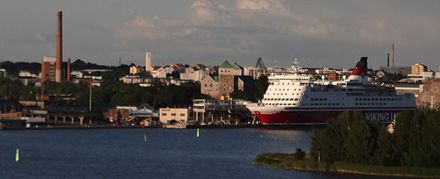
After Helsinki, cities in Western Finland have the best international connections.
By plane
Domestically, Turku, Pori, Vaasa and Kokkola have flights from Helsinki, though unless you're connecting from an international flights or in an extreme hurry flying from Helsinki doesn't make much sense — even Kokkola is reachable in just four hours by the fastest trains. In addition, Turku and Vaasa are served from Stockholm by SAS and AirBaltic and Wizz Air fly to Turku from Riga and Gdansk, respectively.
Tampere airport is fairly close and well connected to Satakunta, Southern Ostrobothnia and Finland Proper, and is the Finnish hub for AirBaltic.
By train
Trains between the three major cities of Turku, Tampere and Helsinki are frequent. Seinäjoki and Kokkola are on the main line between Helsinki and Oulu, the fourth metropolitan area of Finland. Also Vaasa, Pori and some other towns are accessible by train.
By bus
Major cities are connected to each other and to Helsinki by several coaches a day – Turku has coaches from Helsinki more than hourly – and most smaller towns have a couple of daily buses to the nearest major city. See Matkahuolto for timetables.
By boat
There are four daily ferries from Stockholm to Turku via Åland; Silja Line and Viking Line have one day and one overnight departure each. From Kapellskär in Norrtälje Finnlines sails to Naantali for those with vehicles (bikes suffice), and you can also get in with smaller ferries from islands along the northern and southern ferry line in Åland. Further north Vaasanlaivat's Wasa Express brings passengers from Umeå to Vaasa. This route has a history of economic problems since it lost taxfree rights, but financing seems to be being secured for at least some years (as of 2022).
The passages over the Sea of Åland and Kvarken (in Gulf of Bothnia) are short enough also for small boats on a fine day. From Åland one can continue through the Archipelago Sea off Turku. It is also not uncommon to sail directly from Gotland. From the east, Hanko is a common waypoint (see Hanko to Uusikaupunki by boat).
By car
There are good roads to the main towns of the region.
Get around
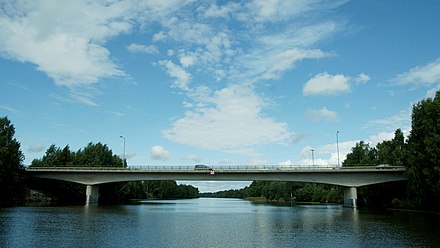 The national road 8, part of E8, colloquially known as Kasitie or Riksåttan, is the backbone of transport along the west coast, with coaches from Turku to the coastal cities northward, and some more between them. As the road has been straightened, there are parallel roads, better suited for tour cyclists, along some of it. Eurovelo biking route VL 10 (not yet marked at this leg, as of 2022) follows this route.
The national road 8, part of E8, colloquially known as Kasitie or Riksåttan, is the backbone of transport along the west coast, with coaches from Turku to the coastal cities northward, and some more between them. As the road has been straightened, there are parallel roads, better suited for tour cyclists, along some of it. Eurovelo biking route VL 10 (not yet marked at this leg, as of 2022) follows this route.
Coaches are usually the best form of intercity public transportation. Timetables are available from Matkahuolto. In some of the countryside, services are very sparse. Check for connections via some regional hub and special arrangements such as "line taxis".
The Finnish main north-south train line, between Helsinki and Oulu, passes through Seinäjoki, Bennäs near Jakobstad, and Kokkola, and Seinäjoki has a connection to Vaasa, so if you are moving about in these areas, check train connections. The trains on the Tampere–Turku and Helsinki–Turku railways also have a few relevant stops. For most of the region, getting around by train is difficult.
As elsewhere in Finland, driving is the most convenient way to get to remote places. Pay attention to the speed limits on highways — speed limits that change intermittently between 80 and 100 and speed cameras are frequent! The highways are mostly just two-lane, with a lot of truck traffic. If you have a long journey, you might want to drive some of it on alternative routes with less traffic and more to see.
See

- Turku castle and cathedral.
- The old town of Rauma, an UNESCO World Heritage Site, and other nice wooden old towns.
- The Bronze Age burial site in Sammallahdenmäki, an UNESCO World Heritage Site.
- Kvarken Archipelago, an UNESCO World Heritage Site.
- Giant kettle Pirunpesä in Jalasjärvi, the deepest earth erosion in Europe.
- The plains of Southern Ostrobothnia.
- Kultaranta, the summer residence of the President of Finland in Naantali.
- Alvar Aalto center, the administrative and cultural center of Seinäjoki, designed by Alvar Aalto in the late 1950s.
Itineraries
- National road 8, i.e. E8, is the main road along the coast.
Do

- Sail around the Archipelago Sea, in the Bothnian Sea National Park or the Kvarken Archipelago. Kayaks are a nice alternative.
- Go swimming at Yyteri sand beach near Pori.
- Enjoy music at Finland's oldest rock festival Ruisrock in Turku each July.
- Meet the characters from the Moomin stories in the theme park Muumimaailma in Naantali, walk around the old town and relax at the Naantali Spa.
- Dance tango at the yearly Tangomarkkinat festival in Seinäjoki.
- Celebrate the ending of the summer cottage season with fireworks in Kokkola.
- Watch a local hockey derby in Rauma or Pori
Eat
The Archipelago Sea is, unsurprisingly, famous for seafood dishes. Silakka, strömming, the Baltic herring, is commonly available. Due to the mild climate neitsytperuna, literally "virgin potato", the first potatoes of the summer, are an appreciated and quite expensive delicacy, celebrated around the Midsummer in June. Also in Satakunta fish dishes are common, especially the lavaret and smoked lampreys.
Most tomatoes and cucumbers in Finland are produced in Swedish-speaking Ostrobothnia, especially in Närpes. The culinary traditions of Finnish-speaking Ostrobothnia resemble those further north. Try juustoleipä, a spotted squeaky cheese, or rusinamakkara, a sausage seasoned with raisins and barley pearls.
Juice and jam of sea buckthorn (Finnish: tyrni, Swedish: havtorn) is generally associated with the West Coast.
A fast food speciality from Pori (available elsewhere in the country too) is porilainen — a kind of a "hamburger" made with two slices of white bread, between them a thick slice of sausage and onion dices, pickled cucumber, ketchup and mustard.
Drink
In Satakunta there are still living traditions of making sahti, an ancient beer-like beverage seasoned with juniper branches instead of hops. It is hard to find but definitely worth to try.
Koskenkorva, one of the most recognized spirit brands in Finland, is produced in the Koskenkorva village of the Ilmajoki municipality in Southern Ostrobothnia. The distillery is one of the largest employers in the small community.
Sleep
Go next
Western Finland Province
Date Time:Please wait...Timezone:Europe/HelsinkiCoordinates:62.00, 24.00
Ostrobothnia
Primary administrative division
